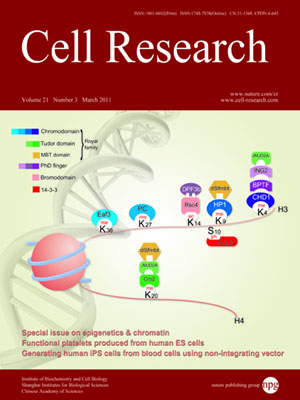
Volume 21, No 3, Mar 2011
ISSN: 1001-0602
EISSN: 1748-7838 2018
impact factor 17.848*
(Clarivate Analytics, 2019)
Volume 21 Issue 3, March 2011: 396-420
REVIEWS
ATP-dependent chromatin remodeling: genetics, genomics and mechanisms
Diana C Hargreaves and Gerald R Crabtree
Howard Hughes Medical Institute, Beckman Center B211, 279 Campus Drive, Mailcode 5323, Stanford University School of Medicine, Stanford, CA 94305-5323, USA
Correspondence: Gerald R Crabtree,(crabtree@stanford.edu)
Macromolecular assemblies that regulate chromatin structure using the energy of ATP hydrolysis have critical roles in development, cancer, and stem cell biology. The ATPases of this family are encoded by 27 human genes and are usually associated with several other proteins that are stable, non-exchangeable subunits. One fundamental mechanism used by these complexes is thought to be the movement or exchange of nucleosomes to regulate transcription. However, recent genetic studies indicate that chromatin remodelers may also be involved in regulating other aspects of chromatin structure during many cellular processes. The SWI/SNF family in particular appears to have undergone a substantial change in subunit composition and mechanism coincident with the evolutionary advent of multicellularity and the appearance of linking histones. The differential usage of this greater diversity of mammalian BAF subunits is essential for the development of specific cell fates, including the progression from pluripotency to multipotency to committed neurons. Recent human genetic screens have revealed that BRG1, ARID1A, BAF155, and hSNF5 are frequently mutated in tumors, indicating that BAF complexes also play a critical role in the initiation or progression of cancer. The mechanistic bases underlying the genetic requirements for BAF and other chromatin remodelers in development and cancer are relatively unexplored and will be a focus of this review.
Cell Research (2011) 21:396-420. doi:10.1038/cr.2011.32; published online 1 March 2011
FULL TEXT | PDF
Browse 2223


